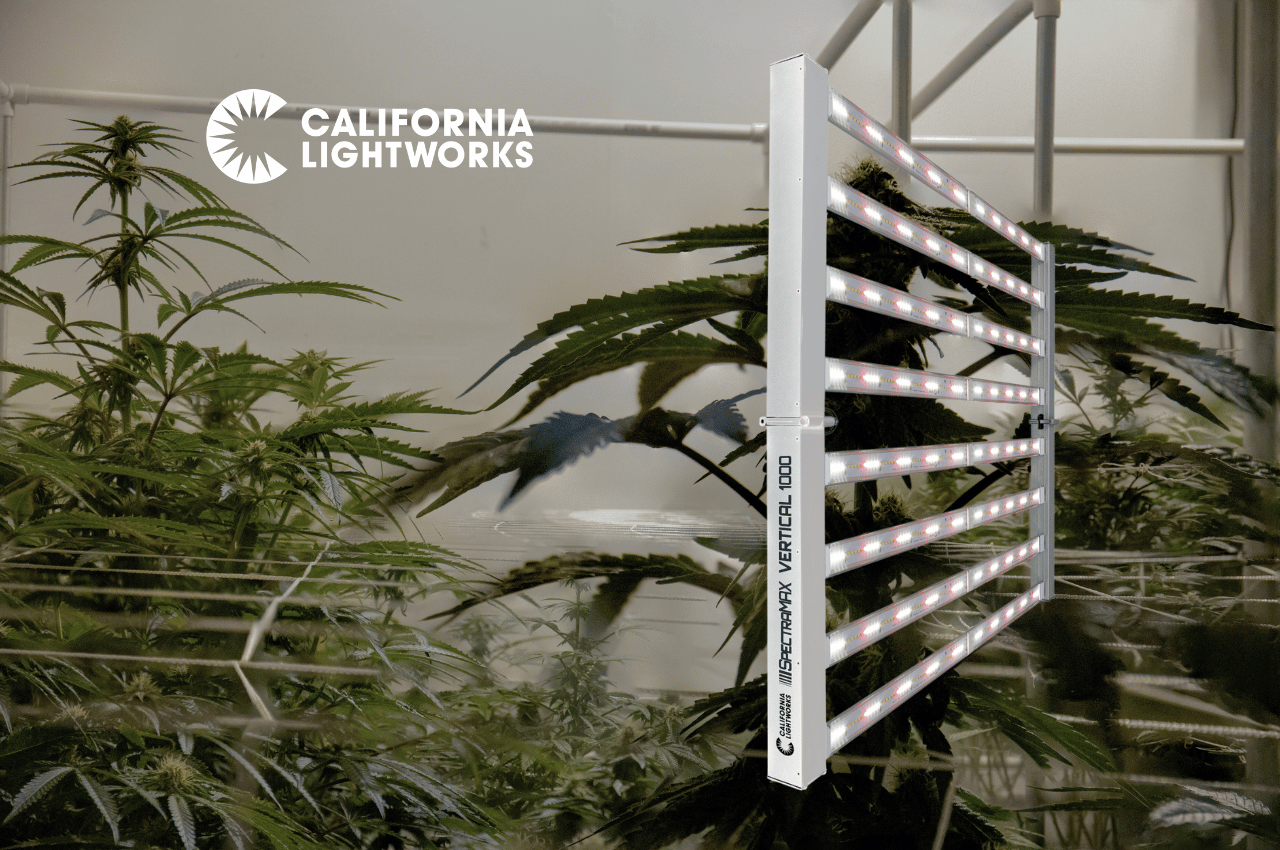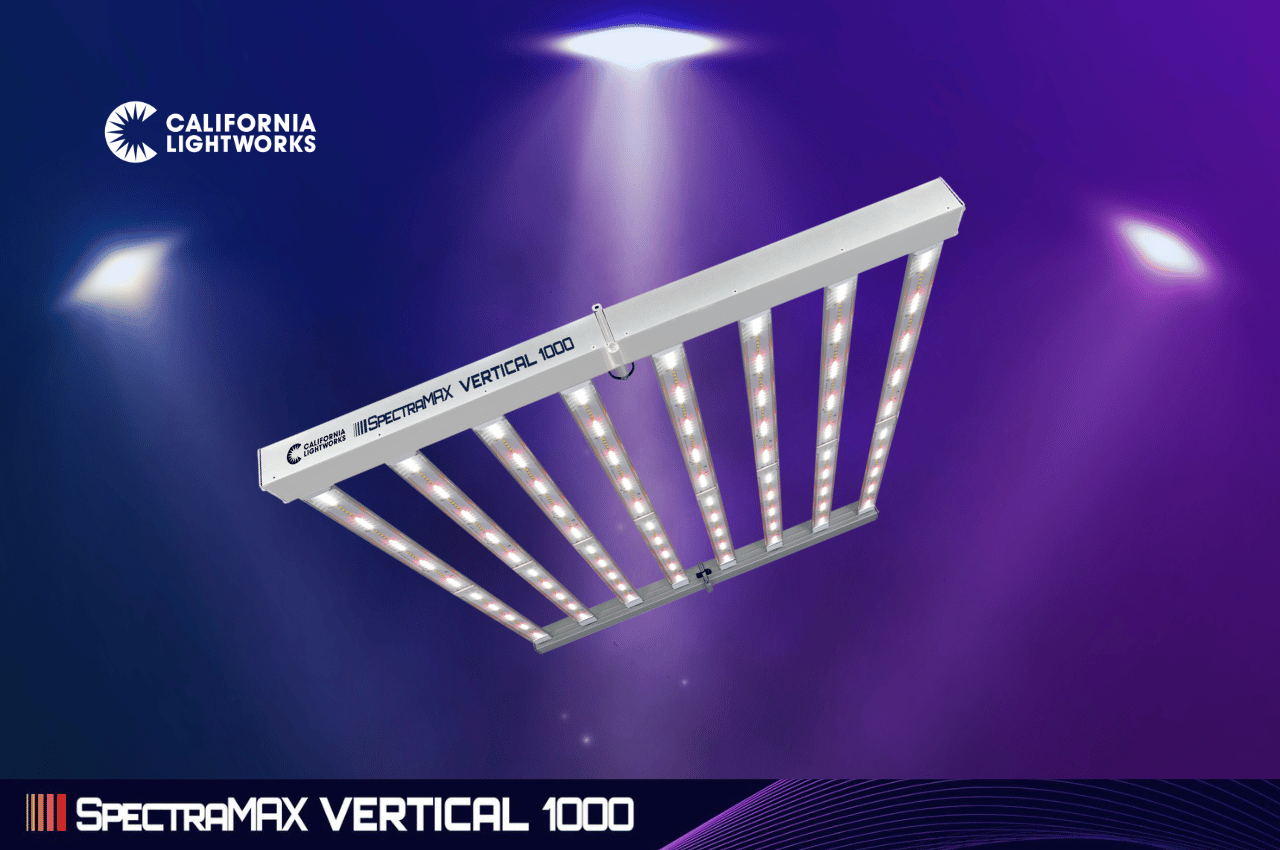Trying to make the tough decision between spectrum control vs fixed spectrum LED grow lights?
For many growers, this decision is not an easy one. At first glance, variable spectrum LEDs seem to offer more power while fixed spectrum fixtures offer more simplicity.
To make the decision even more challenging, the technology of spectrum control is still quite new. Even the notion of a fixed spectrum engineered for optimal growth was revolutionary only a few years ago.
You are choosing between two game-changing technologies that many cultivation professionals are still learning about.
We can help. California LightWorks manufactures both fixed spectrum LED lights and variable spectrum LED lights. Not only that, but we do our own research and development in-house. We know what this technology can do, and we can help you figure out which option is right for you.
Let’s dive in.
The Difference Between Spectrum Control vs Fixed Spectrum
First, let’s clarify what we mean when we talk about spectrum control vs fixed spectrum.
A fixed spectrum LED grow light is exactly what it sounds like. It’s a horticultural light whose spectrum you cannot change.
Ideally, a fixed spectrum lamp emits a spectrum that has been engineered, tested, and optimized to meet the needs of your plants.
Unfortunately, you cannot take this for granted with all LED grow lights. Cheap manufacturers typically don’t understand (or care about) cultivation. They just want to cash in on an exploding industry.
If you choose fixed spectrum lighting, opt for a premium brand like California LightWorks. You can find our fixed spectrum lights in the SolarXtreme series. Every fixture comes with our exclusive Optigrow spectrum designed to meet your plants’ needs throughout the grow cycle.
So, what’s the difference between spectrum control vs fixed spectrum?
Once again, spectrum control is what it sounds like. Also referred to as “variable spectrum LEDs,” this technology allows you to influence plant growth using the color spectrum. You can increase or decrease blue and red light levels separately to design a custom light recipe.
Manipulating the light spectrum offers several advantages. You can guide your plants through the “seasons” of the grow cycle faster by mimicking the way the sun changes from summer to fall. This is especially important with plants that have a separate veg and bloom cycle such as cannabis.
Variable spectrum technology also gives you more control over your end product. An adjustment in the spectrum can help you:
- Increase flower weight
- Increase flower density
- Enhance color and structure
- Enhance fragrance
- Increase potency
- Change the plant height
- Change spacing between the nodes
If you’d like to learn more, you can check out our guide to plant design here.
Both fixed spectrum and spectrum control lighting come with certain pros and cons. To decide which is best for you, consider the following questions.
How Serious are You About Cultivation?
If you are a commercial grower, this question is geared more towards hobbyists. Anyone who grows professionally is obviously very serious about the craft of horticulture.
It’s home growers who need to take their own level of interest into account when choosing between spectrum control vs fixed spectrum.
There is a steep learning curve for variable spectrum lighting, especially for first-time growers. Plenty of hobbyists relish that learning curve. They dive deep into the research and genuinely enjoy the process of trial and error. They love optimizing their crop with scientific insight.
Others simply enjoy the hands-on routine of growing. They like turning a seedling into a thriving plant that serves a purpose. Nothing has to be “optimized” or understood on a deeper level. They just want to grow, and they want it to be fairly straight-forward.
If you fit into the first category, you will love working with spectrum control. If you’re in the second category, an optimized fixed spectrum lamp is all you need for a successful grow.
Are You Growing Professionally or Recreationally?
In other words, are you growing to meet the demands of a buyer or just for yourself?
There is no rule that says commercial growers must use spectrum control and personal growers must use fixed spectrum.
In fact, we have hobbyist customers who love our variable spectrum lights. And we have professional customers who have gotten premium results with our Optigrow spectrum.
The reason we encourage you to consider your status as a grower because it raises the question of flexibility.
A premium-grade fixed spectrum grow light will help you achieve a professional product. But you will have a harder time adapting that product should you wish to manipulate the plant size, chemical profile, flavor, or appearance.
A variable spectrum LED grow light allows you to evolve your operations as the market changes.
What are Your Priorities for Your Crop?
A fixed spectrum grow light achieves a quality product, as long as the lamp is high quality and the spectrum is optimized for cultivation.
So if your goal is to grow a plant with a structure, flavor, and chemical profile you can be proud of, a fixed spectrum will do it.
However, if your goals are more specific, you would probably prefer to have spectrum control.
Variable spectrum lighting allows you to manipulate your crop to achieve a wide range of goals. Do you want more flower density and less potency? More potency and increased vibrancy?
If you want to design a specific and distinctive end product, spectrum control lighting is the way to go.
How Much Can You Afford to Spend on Your Lighting System?
You can typically expect to spend more for spectrum control vs fixed spectrum LED lighting.
However, if you are a commercial grower, you can probably expect a sizable return on your variable spectrum lighting. This technology may have a higher initial cost, but it also produces a high-value product.
It’s also worth noting that any premium LED grow light—fixed or variable spectrum—pays for itself sooner than you might expect. You use only half the energy you’d use for HID lighting, significantly reducing operation costs. LEDs also last a good ten to fifteen years with no bulb changes.
If you are exploring cultivation for the first time and want to stick to a smaller budget in these early days, fixed spectrum might be right for you. Just note that if you do plan to advance your grow setup in the future, you can save money by starting with spectrum control.
Spectrum Control vs Fixed Spectrum: It’s a Question of Growth
Not just your plant’s growth. Your own.
Are you ready to experiment with new light recipes? Do you want to dive deeper into the science of cultivation? Is it time to enhance or alter your product? Then a variable spectrum LED is a great option.
Also consider what lies ahead for your grow operation. If you can see yourself trying spectrum control in a few years, you can save money by taking the plunge now. After all, California LightWorks fixtures last a minimum of ten years.
But if you’d rather keep your operation simple, you can still achieve professional-grade results with a fixed spectrum light. It’s all about your goals and interests.
As you weigh your options, we encourage you to take a look at our fixed-spectrum SolarXtreme series and variable spectrum SolarSystem series. Greenhouse growers may be interested in the GH Pro 340, which features wireless spectrum control and automatic dimming.
And if you can use some help deciding which light is best for your grow setup, drop us a line. Our U.S.-based support team is happy to help growers find the best solution to meet their goals.







